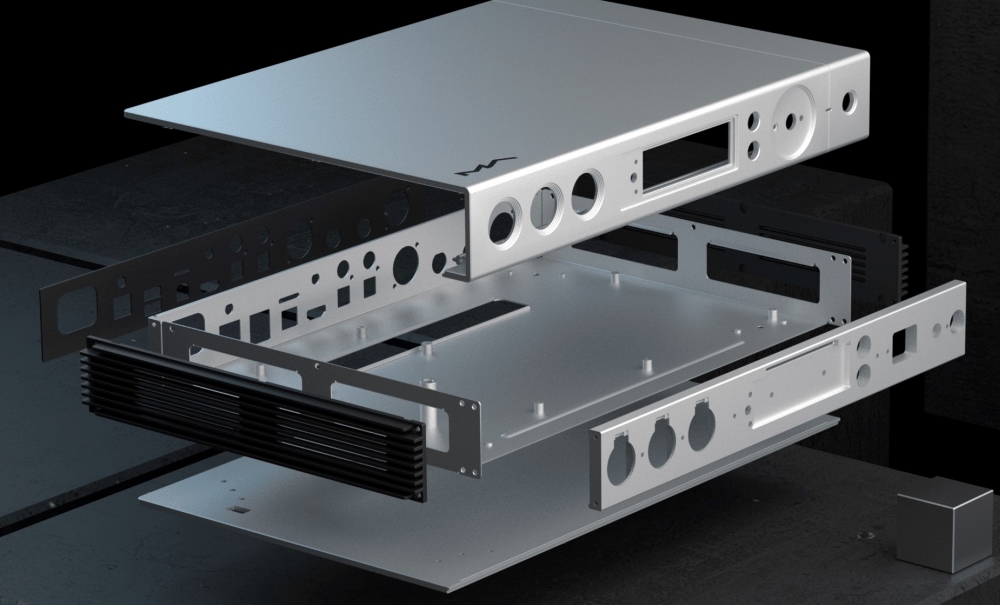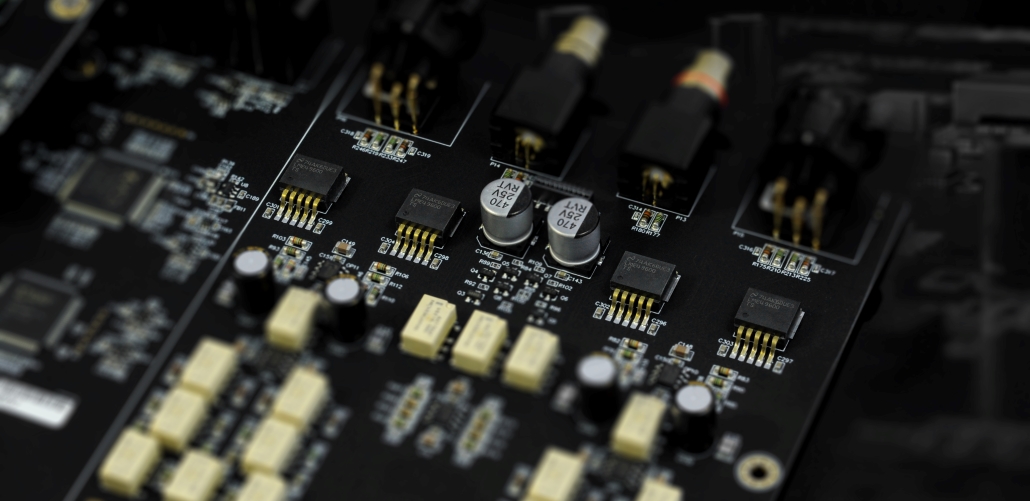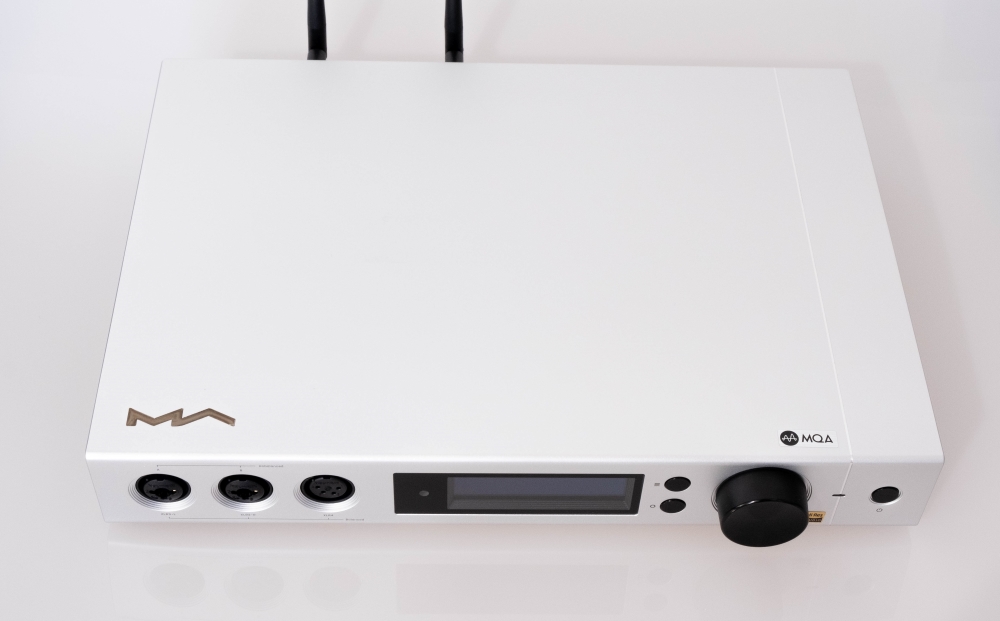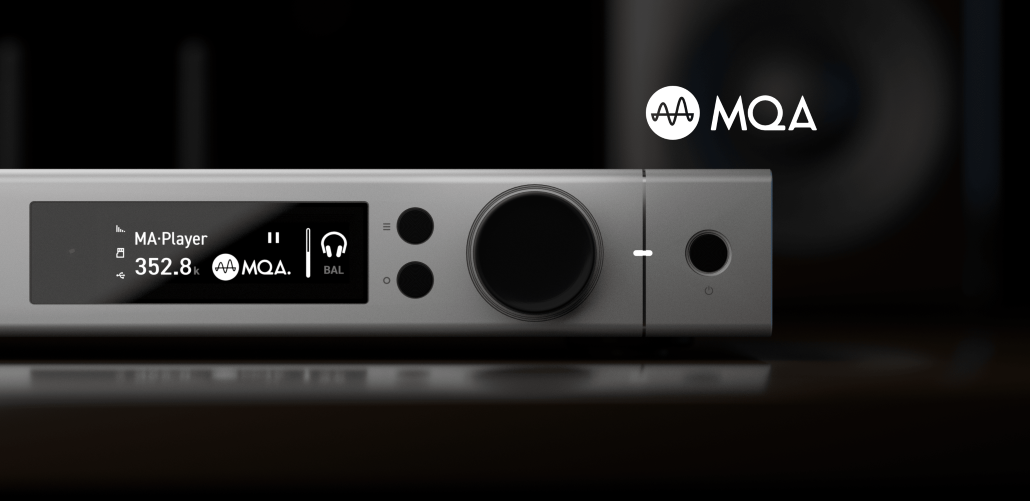In the fall of 2018 Matrix Audio shown the world the face of their newest Element series of products. Being an early adopter and later on an owner of their much-regarded Matrix X-Sabre Pro my curiosity level skyrocketed! Back in 2017, Matrix Audio actually pioneered the ESS9038 PRO DAC chips as they were first to implement it in a commercial product. Of course, years have passed and it’s time to show growth an innovation and this is basically how newest Element series came to be. Matrix Audio along the years received few reviews from us and I think it’s time we review again their top-of-the-line and state-of-the-art Element X.
From the start I can tell you that Element X is again a pioneer in terms of feature set, since not a single commercial DAC will offer the same quality-of-life improvements and features that Element X is bringing to the table, all about that in a minute.
Please meet the family
The newest Element series from Matrix Audio consists of 4 products:
- Element H that is a USB 3.0 interface to be used inside a desktop PC for the best possible USB transport to any USB DAC, it features Crystek femto-second clocks, solid capacitors, a low noise, high current LDO chips and an all-metal case that works as a shield from internal PC noises
- Element P is an advanced DAC based on ES9028 PRO with a full MQA decoder, a powerful streamer, has DLNA and AirPlay capabilities, a simple USB host musical player and it is also outputs 230W per channel at 4 Ohms to a nice pair of passive speakers.
- Element M that is a twin-brother to the Element P but switches the powerful integrated amplifier with a desktop headphone amplifier, capable of outputting up to 1320 mW of power into 32 Ohms.
- Element X – it is the flagship product and the only one based on the flagship ES9038 PRO DAC chip, with a full MQA decoder, it uses the flagship Crystek CCHD-950 femto-clocks plus the ultra-low noise LDO ES9311. Matrix Audio is assuring that they have achieved the full potential of this hardware over the years of development and experience. Element X can be also be a powerful balanced headphone amplifier, a streamer/DLNA/AirPlay capable and a very advanced internal player (through the microSD card slot or USB host) remotely controlled by a smartphone app.

Unbox Therapy
Unboxing experience is so far the best I’ve seen in a commercial DAC product, the first large box is stuffed with lots of air-bubble foam, the second box that contained the unit itself has a thick foam to protect it well from mechanical shocks.
Inside the cool looking Matrix stamped cardboard box you will find the Element X itself, a metal remote, a USB cable with 2 ferrite magnets on both ends, a power cable, two Wi-Fi antennas, a warranty certificate with a serial number stamped on it and a very in-depth user manual which I recommend you read carefully.
Matrix Audio put some effort in making a pleasant unboxing experience.

Design & Build Quality
From the first glance it is obvious that Matrix Audio is moving forward in terms of design and aesthetics. The newest series are looking different than any of the all-in-one boxes I have seen of late. The single-box fully CNC case of X-Sabre Pro was replaced with a bigger silver CNC roll-cage, on both sides Matrix put a beautiful looking heat-sink with a see-through design to better dissipate the heat. I know very well how their X-Sabre Pro heated my room in the winter so I really welcome this approach.
I have several all-in-one units at my place and several DACs as well but none of them are as large and heavy as Element X and for good reason since none of them is packing so many features in a single box.
At 340 * 281 * 60 mm (L_W_H) it is almost twice as wide compared to Benchmark DAC3 units or to Mytek Brooklyn DAC+, weighting a whopping 4.2 kg (9.3 lbs) it is twice as heavy as well.
Taking a glance on the back panel was a big Wow moment for me as I sincerely never seen so many digital inputs in a unit!

What is exactly the Matrix Audio Element X and how to control all that power?
- Of course, first of all it is a top-of-the-line Digital to Analog Converter (DAC for short) capable of decoding PCM material up to 32 bit/768 kHz and natively decode DSD material up to 45 MHz also called as DSD16 or DSD1024 because the sample rate is 1024 times that of CD (1024 times of 48 kHz) – that is a first in the DAC realm!
- It is a powerful desktop headphone amplifier capable of outputting up to 1700mW of power on the 4-pin and dual 3-pin XLR balanced headphone outputs or 1150mW of power on dual ¼” (6.35mm) headphone outputs
- It is a dedicated digital-preamp that can output 4.5 Vrms at 0 dB and 15.8 Vrms at +10dB
- It is an advanced hardware music player that can be controlled via the Matrix Audio app on your smartphone, just plug in your microSD card or an external USB drive and listen to your favorite tunes without attaching a PC to it, very neat!
- It is an advanced Wi-Fi streamer that can stream music from your local NAS drive through DLNA, AirPlay, it is also Roon enabled. Matrix Audio will also support very soon major streaming services (Tidal, Spotify, Deezer and so on) using the MA app, it should come with the next software update.
If offers 9 digital inputs (that is right, Nine of them): 2 coaxial, 2 optical, one USB type-B, one highly advanced i2S-LVDS input thought HDMI that bypasses the internal USB interface, one microSD card slot and two USB host inputs – you can use an external flash drive, an external HDD or even an iPhone (using the CCK cable) or an Android device (only few are supported that offer USB OTG functionality).
The Mytek Broklyn DAC+ that I reviewed two weeks ago was feature packed, but this one takes the no.1 spot as the most advanced all-in-one unit passed through these hands.

Front panel features & Display settings
On the front panel I am greeted by two ¼” headphone jacks that can be also used as a dual 3pin XLR balanced headphone output, there is also a 4-pin balanced headphone out, a big LCD screen that shows important information: such as the selected input, output, the volume level, filter settings, wireless connection, bitrate and data stream, when playing a MQA file the MQA logo will show up on the screen. There is also a menu button where every setting can be accessed from there. The second button is a custom button and its function can be selected from the menu. There is also a special volume pot and a power On/Off button.
You have 3 possibilities of controlling the Element X and changing its setting: via the LCD screen and buttons, via the metal remote control and via the MA remote control App. Honestly, after installing the app I am controlling it only from there for convenience and fast response time.
Via all three you can change: the desired input, 7 selectable digital filters incorporated in the Sabre chip on the hardware level, line out mode (3 modes), PCM filter, DSD filter, headphone gain, dither, jitter eliminator, DPLL bandwidth, IIS-LVDS port definition, dimmer, auto sleep, the custom button “o” function, USB Audio mode, remote, load default and product info. There are a lot of settings, but most of them you should set and forget.
Here is a picture of the selectable 7 digital filters explaining what should you expect from them sound-wise.

Under the Hood
Element X is rocking the most advanced ESS Sabre 9038 PRO 8 channel chip plus a full MQA decoder for the streaming folks.
As the X-Sabre Pro before it, Element X is also using the best toroidal transformer from Noratel along with Nichion audio grade capacitors. As such it is having an advanced power supply and multiple levels of LDO isolation for accurate sound reproduction.
The internal headphone amp is based on four high-performance LME49600 op-amps. If you are listening in a single ended configuration only 2 of them will be engaged, and if you are listening in a balanced headphone configuration all four will be working in a 100% balanced headphone drive. At 1700mW of power in 32Ohms it should deliver plenty of power even to harder to drive headphones, will see about that in a moment.
Remember the special volume pot I was mentioning above? Well, normally you have an all-analog or an all-digital volume pot but both designs have their pluses and minuses. But how about developing a hybrid volume pot design that should incorporate only the good parts of both designs? That is exactly what Matrix Audio did! It uses an array of high-precision analog relays combined with the internal digital volume of the DAC chip. This technique combined the sound quality advantage of an analog volume pot but with the precision of a digital pot. That is pretty cool if you ask me.
OK everyone, it is time I have a longer listen to it.

Sound Performance
I. In a headphone-based system.
Using its internal headphone amplifier, I was comfortably driving a pair of 3000 USD Meze Empyrean at about -10 dB, I had 10dB left to the unity gain of 0dB and another 15dB to the maximum volume. In total I had 25 dB of headroom left on the single ended output with a pair of planar-magnetic headphone.
On the 4-pin balanced connection I was driving quite loud a pair of Quad Era-1 at about -15dB, so in total I had 30 dB of headroom left. Judging from these numbers alone I think it should be able to drive harder to drive headphones as Audeze LCD-4 or HifiMan HE-6SE as well.
With very sensitive IEMs on the ¼” output I was sitting between -35 and -30 dB, so a huge amount of headroom left. In terms of residual noise and background it almost matches the reference Benchmark HPA4. Plugging in FiiO FH7 and FA7 shown a complete silence up to unity gain (0 dB) and just a tiny amount of noise going north than that. However, you can’t listen to music at that volume with IEMs. In terms of background noise, Element X is the second-best performing headphone amplifier (cleanest being the Benchmark HPA4) I ever tested.
I know few people that shown concerns in terms of how good the internal headphone amp is. I can assure you that it is performing quite admirably with all headphones in my possession. It will drive IEMs and dynamic full-sized headphones with ease and even few planar-magnetic ones with the right cable (4-pin XLR). It will however not compete with the best of the best; it is not sounding as dynamic and hard-hitting as Benchmark HPA4 or Aune S7 PRO for example but closer to a dedicated mid-range headphone amp.

The internal headphone amp left me an impression of absolutely no coloration, no dips or rises in the frequency area, just a very linear and quite revealing experience.
What really impressed me using headphones is how clean it is sounding; it is among the cleanest all-in-one solutions I had the pleasure of testing. Performance wise, it is miles ahead compared to the mid-range DAC/Amps I’ve heard of late such as Burson Playmate, xDuoo TA-10, Loxjie D20, Aune S6 PRO, even smaller headphone amps like Gilmore Like MK2 and Erzetich Bacillus will not be as clean and linear sounding.
Truth to be told, all LME49600 designs are sounding like this, revealing, transparent and quite linear.
Since its internal headphone amp section doesn’t have a coloration of its own, it is quite versatile in terms of headphone pairings as it will basically show the character of said headphone and nothing more.
There were few instances when with faster paced music the control of headphone drivers was not top-notch and this is actually the only part of its internal head-amp that bothered in the long term. If you are hunting for an ultimate headphone experience, then a dedicated balanced headphone amp will be mandatory.
I then moved the headphone amplification duties to the Benchmark HPA4, I set the XLR output fixed at 0 dB (to bypass the volume control of Element X), I attached an external SSD to the USB host and used the MA remote control app to browse thought my music collection. This way I completely removed my PC from the acoustic chain and the USB limitations as well.

Well my friends, when I pressed play my jaw hit the floor as this level of performance was unheard of so far in my setup. It outperformed any other DAC + headphone amp I had the pleasure of listening. It easily outperformed my X-Sabre Pro in every way possible.
It had more micro-information, it sounded much deeper, super extended on both ends having the best control of headphone drivers. Simply put I was having an audiophile nirvana moment as every tune I played shown me that there is just a little bit more of everything. More bass, more midrange, more treble information, deeper and wider soundstage. It also sounded crazy natural and impressively smooth, I checked again what I am listening to, it was almost unbelievable I was listening to an ESS Sabre design.
To this day, such naturalness and musicality was unheard of in an ESS Sabre design, even Burson Audio designs that we all know are quite natural sounding – were harsher and had more digitus.
Moving on to the USB-type B connection using my PC as a transport the performance takes a serious hit and is not as impressive sounding. Now, don’t get me wrong, the XMOS XU216 is currently the best performing USB interface on the market, it is just that the USB connection is having so many issues that need to be addressed, that making a good sounding USB DAC is quite difficult. I tried avoiding the USB DAC problems, I purchased a higher performance USB cable, I even purchased a very well-regarded Matrix X-SPDIF2 interface and used it in my acoustic chain and with the right settings my X-Sabre Pro almost matched the performance of the internal player of Element X, still internal player was in a league of its own.
In my opinion, if you want to extract the best Element X can offer to you, use the internal player and listen to your music from an external USB drive and in the next software update Matrix Audio will also include direct streaming services such as Tidal, Spotify and others that should again sound better than going USB to a PC and using those streaming apps from the PC.
So, my short version of what inputs are sounding best I think USB host and the microSD slot will have the best sound quality, followed by Ethernet, by I2S HDMI input, by USB input and then by coaxial and optical inputs.
I am so very sad my own X-Sabre Pro doesn’t have an internal player and streamer…

II. In a speaker-based system
My powered KEF LS50W loudspeakers are having an internal Hi-Res DAC that performs quite good, but if needed an external DAC can be connected to them.
Connecting Element X was quite a shock for me, especially listening directly from its internal player with an external SSD attached, as I never heard my speakers so effortless and wide sounding in my room. My personal X-Sabre Pro is an extraordinary performing DAC, however with the optical input from the Chromecast Audio it just cannot compete with the internal player of Element X.
Element X just decompressed my LS50W in a such a way that I even asked my wife to take a listen with me confirming what I am hearing. I think Element X has the widest and most expanded soundstage I heard in my living room. It is just bigger, bolder than usual, with much bigger air bubbles between the musical notes. There is just a bigger space between the notes. It is actually the only DAC that matched the soundstage size and holography levels of the Aune S6 PRO.
Same can be said about holography and depth as LS50W never sounded as deep with such an accurate pin-point imaging.
Listening to Mozart Violin Concertos (MQA) at 352kHz streamed from Tidal was a revealing experience not only in terms of how wide it sounds but how effortless as well. The second-best trait Element X tickled my ears with was how effortless it sounded. So smooth, so musical and natural, it is again unbelievable that this is not a NOS (non-over-sampling) R2R design.
In terms of naturalness and believable sound Element X was again just spot on with sweet harmonics and natural decay of the notes. Hard to explain but it just sounded right from the moment I pressed play.

With other digital sources I tried my speakers with, the sound is a touch harsh, cramped and doesn’t breathe as easily. Even expensive designs as Benchmark DAC3 or Mytek Brooklyn DAC+ didn’t offer such an effortless, natural and smooth presentation.
When it comes to transient response, I think Element X sounds admirable, it will not tire you down with overly fast transients or sudden stops of the decays (how for example Chord Electronics DACs are sounding), Element X chooses detail information, transparency AND naturalness for a complete musical performance.
In terms of frequency response, this is will be an easy one.
From the lowest bass notes to the highest treble regions Element X was linear, honest, extended, controlled, super detailed yet musical and easy going.
There was not a single frequency area that took the spotlight, that shines brighter than others, none of that. Element X will deliver in exact doses everything is needed for a life-like presentation.
Listening to the James Blake – Limit To Your Love – a mediocre recorded track, at 0:55 mark there is a deep and fast pulsing bass that will put to the test the best headphone or speaker drivers and your source and amplification as well. Element X does that with such an easy it doesn’t even struggle.
At 2:45 mark some drums are kicking in together with those deep bass notes, with mid-range sources that will sound like a blob of sounds, with Element X the blob expands and you could literally follow every note you desire until it decays.
I could go on and on about how much it impressed me on speakers and headphones alike, especially from the USB host input.

Digital inputs battle
I decided to test individually all the digital inputs and these are my findings.
1. Optical
I used my Chromecast Audio via optical and streamed Tidal Hi-Fi directly to the Element X. I also used a Playstation 4 Pro to play some games via optical to the Element X. All the listening was made on my KEF LS50W.
Everything sounded nice, with no obvious flaws, no hiccups or stutters, just a smooth musical performance. The soundstage took a hit and airiness as well, it is a bit upfront sounding on this connection.
2. Coaxial
I used an older M2Tech Hiface interface and took a listen. As the optical input, everything was there, it reminded me a lot about the optical performance, it sounded maybe just a tad better, but you should take into the consideration that the HiFace interface improves the performance a tiny bit. All-in-all it sounded just a bit wider and more natural than on optical
3. UBS type B
Used my PC with a fancy USB cable and to my surprise the XMOS XU216 interface makes wonders as it sounds much better than the first two attempts. Even more extended, more natural and offer just a bit more detail information, it is also a bit more extended on both ends. So far USB input impressed me a lot.
4. I2S-LVDS (HDMI)
My own X-Sabre Pro is being used with a Matrix X-SPDIF2 interface to very good results and I borrowed it to mate it with the Element X.
Before telling you how it sounded, you should know that by using it in this configuration the signal from the X-SPDIF2 interface goes directly into the ES9038 PRO DAC chip without additional chips in its path, how it is done for example on the optical, coaxial and USB.
With the right settings on both devices the sound improved again compared to the USB input, it sounded even more natural and silky smooth. It didn’t offer additional information, didn’t sound wider or deeper, just a bit smoother and natural. If on USB it might sound sometimes grainy or strained, on I2S that never happened.
5. USB host/microSD card slot
As I said previously, this is the best sounding interface to me. Take the I2S connection but add more air to the mix, expand the stage and add a bit of naturalness. I only hope that streaming directly from Tidal/Spotify/Deezer from the MA app will sound as good.
I liked the USB host feature so much that I took it with me in the bedroom and when my wife watches her favorite TV shows I will be listening to few albums before bedtime. I just attach my headphones to it and use my smartphone as a remote for the MA app, so convenient.
No comparisons for now, but in few days, I will be publishing separately a 4-way DAC comparison, stay tuned for that!

Conclusion
Matrix Audio Element X is an incredible feature-packed all-in-one device that should please a lot of folks. It has such a natural and life like presentation with tons of micro-detail information that until now that was not possible in an ESS Sabre design.
Having a 3-way possibility of controlling all its features makes is super versatile and easy to use. In terms of build quality there is nothing to complain and I understand why the side panels has this see-through design as the DAC part, headphone amp part, pre-amp and streamer are releasing a lot of heat, a clever solution for sure.
Listening to it from the USB host and very soon through the streaming apps it is like living in the future. I wish more DACs will adopt those two very convenient and most importantly great sounding features.
This is the coolest looking and most advanced DAC I had the pleasure of testing at my place.
Matrix Audio Element X can be purchased directly from Matrix Audio at 3000 USD following this link or you can contact your local distributor.
PROS:
- Unique looking device with a solid build quality
- An impressive feature-packed 5-in-1 device
- Linear and extended, lacks any sound coloration
- Unmatched levels of transparency and resolution
- Widest soundstage and deepest sounding as well
- Very precise pin-point imaging
- Excellent pace, rhythm and timing with fast kicking dynamics
- Linear and uncolored headphone amp section with power to spare
- Lacks any noise or distortion
- Widest selection of digital inputs
- Not the hardest grip, nor the best control using harder to drive headphones
- DACs: Matrix Audio Element X, X-Sabre Pro, Mytek Brooklyn DAC+, Benchmark DAC3 HGC, Aune S6 PRO, Burson Playmate & Swing
- Headphone amps: Benchmark HPA4, Aune S7 PRO, Erzetich Bacillus, Headamp Gilmore Like Mk2
- IEMs: FiiO FH7, FA7, KZ AS16
- Full-sized headphones: Meze Empyrean, Quad ERA-1, Sennheiser HD660S
- Loudspeakers: KEF LS50W
- Interconnects: QED Reference XLR, Aune AL3 XLR
- Power Cables: Isotek EVO3 Premier
- Balanced Isolation Power Conditioner: KECES BP-600



I posted today the HPA4 review as well.
Will reply to you there regarding its sound.